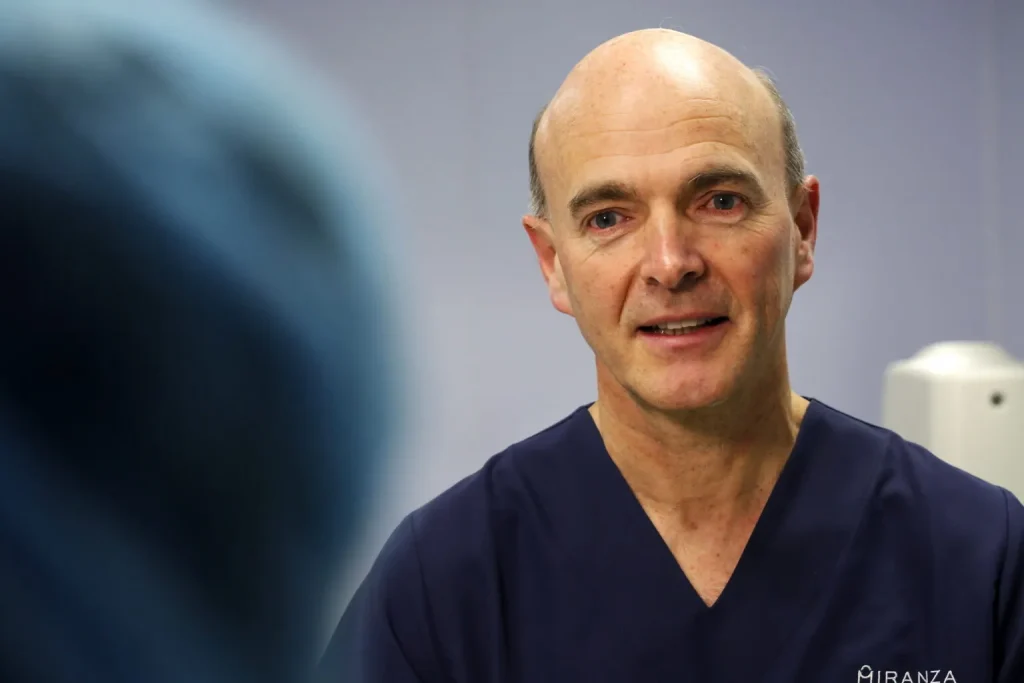
Miranza takes part in a reference book on intraocular lenses calculations
Dr Jaime Aramberri, Medical Director at Clínica Miranza Ókular in Vitoria and refractive surgeon at Miranza Begitek in San Sebastian, presented the publication of the book Intraocular lens calculations at the annual meeting of the IOL Power Club Scientific Society held on 10-13 April in the city of Rockland (Maine, United States).
This is a significant milestone in the field of crystalline lens surgery (cataracts and eliminating the need for glasses over the age of 50), as over 50 internationally renowned scientists (ophthalmologists, physicists and engineers) have taken part as co-authors, coordinated by a team of 4 editors with extensive experience in the field of intraocular lens calculations. This group forms part of the IOL Power Club, an international Scientific Society which has been holding annual meetings since it was established in 2005. Dr John Shammas (Los Angeles, USA) is currently the president and Dr Jaime Aramberri is vice-president.
This book, with 72 chapters and almost 1,000 pages, studies all aspects involved in the field of intraocular lens calculation. From a thorough review of basic matters regarding optics and metrology to the most recently published formulas and methods, including a review of the appliances used to measure the variables involved. This work will, without a doubt, become the reference book for cataract surgeons worldwide for many years.

We spoke with Dr Jaime Aramberri, who explained what the publication of this book means in the community of refractive surgery experts.
Can you explain the importance of the publication of this book?
The field of intraocular lens calculation is essential in the development of modern crystalline lens surgery. Improving our precision in the optical prediction of intraocular lenses has formed the basis for expanding this technology, with the appearance of more complex designs such as multifocal lenses and toric lenses.
You can now have cataract surgery and you will very likely have clear vision without the need for glasses for either near or distance vision. This is because your surgeon has precisely calculated the power of the intraocular lens implanted in your eye. That is precisely the importance of this book.
Have no other books been published beforehand?
Yes there have, but none as ambitious as ours, with the collaboration of the most internationally renowned authors. We started with a small group during the pandemic and, as the word spread, everyone wanted to get involved. Finally, nobody wanted to be left out and, after three years of work, the book has finally seen the light. And, I must say, we’re really happy with the result.
The IOL Power Club has also used the financial aid from its sponsors to pay for the book to be published with public access, so there will be a digital version that can be downloaded free of charge on the internet and a reasonably priced physical version.
What is the IOL Power Club?
It’s a group of scientists who have been meeting annually for the past 19 years to discuss current issues and innovations in the field of intraocular lenses. Entry is by invitation only to individuals (physicians or scientists) who have published a relevant work in this field. There are currently 30 active members and the number remains limited to ensure the quality of the scientific debate. The 2025 meeting is scheduled to be held in Santa Barbara, California.
What is you relationship with the IOL Power Club?
I’m its founding member and I form part of the Executive Committee. I’m currently the vice-president. Incidentally, the founding meeting was held in San Sebastian (my birth city), as nobody could resist the physical and, more particularly, culinary charm of Donostia. In fact, we held another meeting there in 2015 at the request of all the members. And they insist on coming back every year, so I wouldn’t be surprised if we returned sooner rather than later.
What are the most noteworthy developments in this field?
Without a doubt, the application of artificial intelligence algorithms to optimise different steps in the calculation process. This has meant that accuracy and precision have improved as far as their latest possibilities will take them. This has meant that over 90% of all cases can result in a residual focusing error of less than 0.5 dioptres. In short, good eyesight without glasses.
What future projects does the IOL Power Club have?
To continue meeting to stimulate the research and development of new formulas and applications in this field. We’ve decided to expand on the contents of our website and include applications for lens calculations in complex cases. This will give surgeons around the world access to the calculation in previously operated cases using corneal refractive surgery, which is estimated to be over 100 million eyes worldwide, and eyes previously operated on with high myopia lenses, which is estimated at around 2 million worldwide. The goal is for everyone undergoing cataract surgery, whatever the level of complexity of their eye, to be able to obtain a result that is in line with their individual needs and that enables them to live life without depending on glasses.